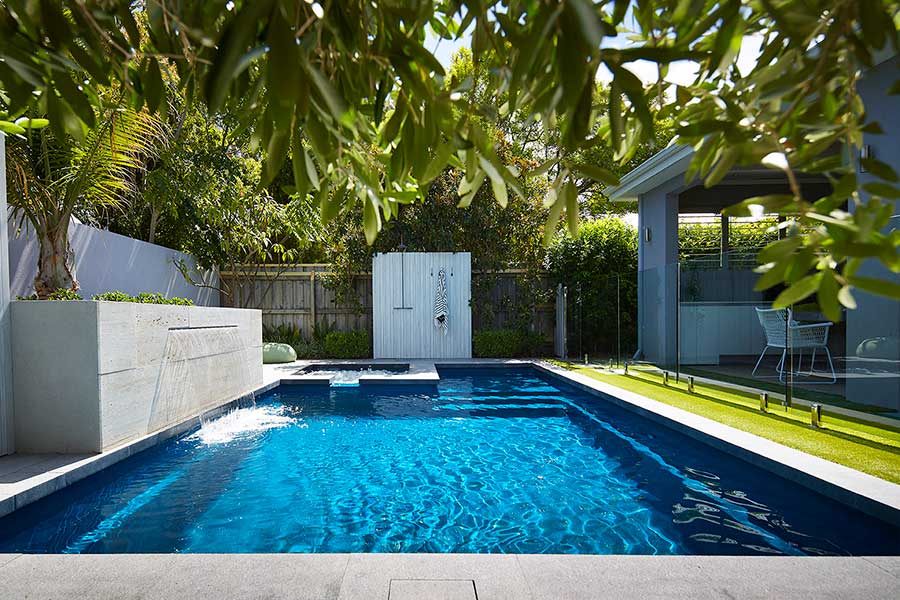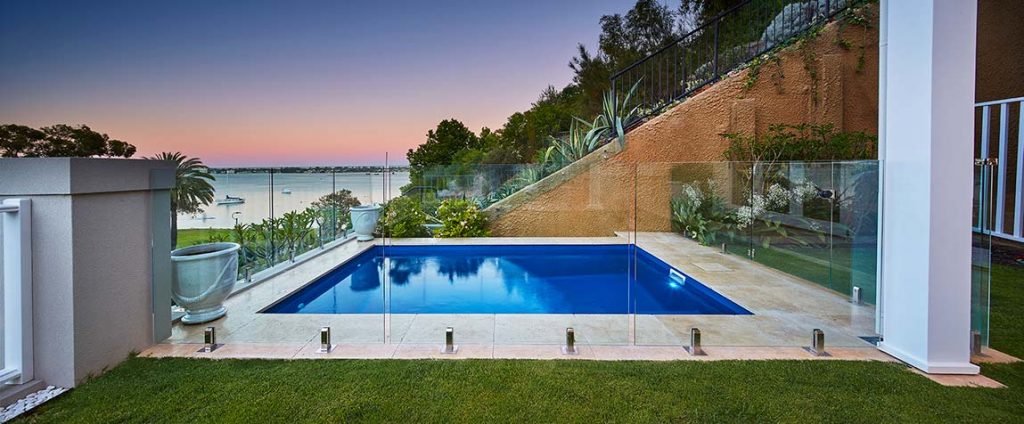Keeping a swimming pool well-maintained and ready to use is not always easy. It requires a lot more than just cleaning occasional debris or leaf litter from your pool. It involves keeping all the chemicals in your pool perfectly balanced for crystal and clean pool water. Unfortunately, the alkalinity levels and pH levels can be too unstable at times. But, worry not.

In this blog, we give you a quick rundown on pH and pool alkalinity levels and all you need to do when it gets out of the recommended range.
What is Pool Alkalinity?
Alkalinity refers to all the alkaline substances present in the pool. These include the total concentration of dissolved bicarbonates, cyanurates, hydroxides and carbonates in the water. These substances being alkaline come in higher on the pH scale. The pH scale ranges from 1 to 14, the highest being extremely alkaline (or basic) and the lowest being extremely acidic.
To understand this better, consider this:
- Lemon Juice – Very acidic (pH level 2)
- Urine – Acidic (pH level 6)
- Water – Neutral (pH level 7)
- Sea Water – Alkaline (pH level 8)
- Bleach – Vey alkaline (pH level 13)
Many people often confuse pH with alkalinity because they work closely together. However, they are not the same thing. While pH measures how alkaline or acidic the water is, alkaline is an actual substance measured in parts per million (PPM)
What is the Ideal Amount of Alkalinity?
The right amount of total alkalinity for your pool should be between 80 and 120 ppm. The exact amount depends on the form of chlorine you use in the pool. If the alkalinity falls below 80ppm or goes above 120ppm, it can lead to undesirable side effects. Plus, it can also reduce the effectiveness of chlorine in the pool.

What Causes Low Pool Alkalinity?
Several reasons can throw off your pool’s alkaline levels. The common ones are listed below:
- If it rained hard, your pool can get flooded with rainwater which might be low in alkaline levels affecting the total alkalinity of your pool.
- Too much sweat and urine can lower the alkalinity levels of the pool.
- The use of muriatic acid or dry acid for treating pool water can reduce the pH concentration in the water. When the pH level drops, the alkalinity level follows.
- If you use too many chlorine tablets to treat your pool water, it can become a problem since chlorine tablets have a very low pH level. This can result in low alkalinity levels in your pool.
What are the Side Effects of Low Alkalinity?
When your pool’s alkalinity levels fall below 80ppm, it turns the water too acidic. Here are some side effects it can cause:
- Drastic fluctuations in pH levels
- Itching or burning of the skin and eyes
- Greenish pool water
- Staining of pool equipment and pool surfaces
- Weathering of pool surfaces
How Can I Increase My Pool’s Alkalinity?
If you notice that your pool’s alkalinity levels are getting too low, it is possible to raise the amount by putting a simple solution in the pool water. It can prevent the pool water from turning green or corroding your pool surfaces and keep it healthy to swim in. Enter Sodium Bicarbonate.
Popularly known as Baking Soda, Sodium Bicarbonate is one of the most useful components in increasing the alkalinity levels of a pool. It is easily available and inexpensive. Use the following method to raise the alkalinity of your pool:

Test Your Pool Water
Start by testing your pool water to measure total alkalinity levels. You can do this by using a pool testing kit or even use a pH sensor. If the alkalinity level is below 80ppm, it is time to raise it.
Purchase Sodium Bicarbonate
It is recommended you buy baking soda from a pool supplier instead of a regular retailer. Your pool supplier will be able to guide you about the right size of the biggest container. In any case, consider buying a 5-pound carton to start with. If the alkalinity levels are too low, you will need more of this to bring up the levels.
Know How Much to Add
Remember to not add too much baking soda in one go. We recommend half or three-quarters of the needed amount to do the trick. If after adding this amount, the pool’s alkalinity levels are still low you can add more in smaller increments. There will be instructions on the package, you can follow them too. The instructions mention diluting the baking soda before placing it in the water. Do not forget to dilute before you pour it into the pool.
Add It in the Pool
Sodium Bicarbonate is highly dissolvable in water as it is a soluble powder. If you want to get this right, avoid adding all the solution in one place. Make sure you spread it throughout the pool. If your pool area is too windy, be careful when you add the powder. The particles can blow into your mouth or eyes.
Retest and Reapply
Once you are done adding the solution to your pool water, wait around 6 hours (and no longer than 24 hours) to retest the alkalinity levels. If they are still low, you can repeat the process. Once the levels are right, the water is safe for you to enjoy a relaxing swim.

What Causes High Pool Alkalinity?
High pool alkalinity is often the result of sweat and body lotions washing off into the pool. Another common cause is using a high-alkaline water source for your pool. Some owners may also go overboard with pool shocking which can cause the pool alkalinity levels to rise.
What are the Side Effects of High Alkalinity?
If the alkalinity levels of your pool go over 120ppm, it can make the water too alkaline. This can cause the following side effects:
- An extremely high pH level that’s not easy to bring down
- Itching of the eyes and skin
- Turning of the pool water into cloudy water
- Corrosion of pool surfaces and equipment
- A build-up of inorganic materials on the surface of the pool
How Can I Lower Alkalinity in My Pool?
Here is how you can lower the alkalinity levels in your pool if it goes above the recommended range:
- Use sodium bisulfate also known as dry acid. It comes in granular form and can be slightly costly. Be careful of the amount you use depending on your pool size and alkalinity levels as too much use can damage the pool surfaces.
- Another common method is to use hydrochloric acid also known as muriatic acid. It comes in liquid form and requires careful handling. You may consult with your pool supplier to buy the right concentration level of this acid.
Key Takeaway
We hope this comprehensive guide on alkalinity in your pool was able to answer all your questions regarding the topic. If you still have some more doubts, you can reach out to us. Our friendly team will be more than happy to solve your pool’s alkalinity issues.
If you have any other pool-related inquiries or are looking to upgrade your pool, get in touch with us.
